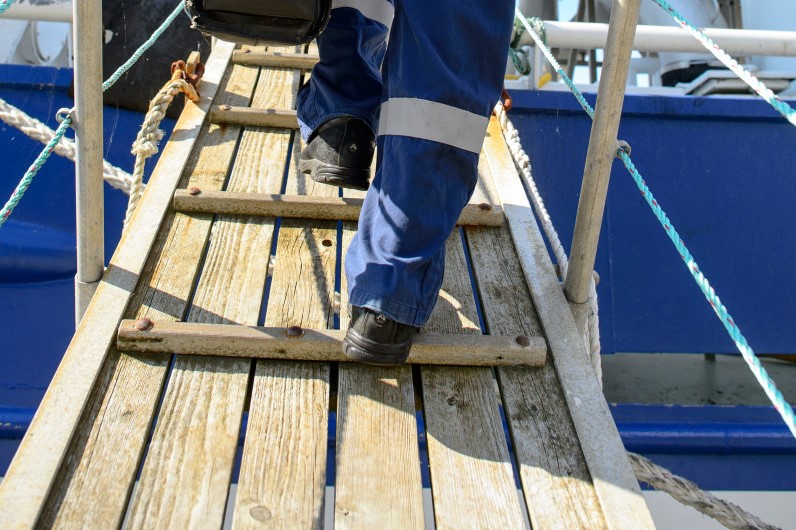So far in 2021, the Norwegian Maritime Authority (NMA), has registered at least five accidents involving a person jumping down from deck to quay. Some of these accidents have resulted in broken ankles and heels or other broken bones. In all cases, the injured person went on sick-leave and was sent home.
The gap between vessel and quay often appears smaller than it is. It is also important to remember that even if moored, the vessel might move. In addition to hard landings on the quay, which may result in broken bones and other injuries, some injuries are caused by incidents where the person falls into the sea between the quay and the ship side. This could, in the worst case scenario, lead to drowning.
Slippery quays
Many incidents occur during mooring operations and in cases where a person is hurrying, not taking the time to rig the ladder or gangway when going ashore to catch the mooring line.
When it is cold in the winter, the quay might be icy. And if there is a layer of snow on top of the ice, it is not easy to see if it is slippery. Sand is not always used on icy quays in the winter, and the weather changes quickly on the coast.
Dangerous shortcuts
During minor crew changes it might seem like a good idea to use the thrusters to keep the vessel close to the quay to let the crew jump ashore or sign on quickly without using a ladder or gangway. It is not difficult to imagine that this might end badly.
On small high-speed and passenger boats it is very important that everyone embarks and disembarks using a gangway, even when it is only one person. Under no circumstances should other quick solutions than ladder or gangway be used, although they could save time.
When delivering or receiving small goods that can be handled by hand, the transfer must be done in the same safe manner as if they were passengers.
Tide
Where the tidal range is high, we sometimes observe improvised solutions to bridge the gap between deck and quay. It is important to cater for an extremely high tidal range when arranging access to the vessel. It is, for instance, useful to consider other and more adjustable quays if the sea is much higher or lower than the arrangements for the vessel at the "regular" quay.
References to legislation:
Regulations on safety measures, etc. on passenger ships, cargo ships and barges
- Section 9. Gangways, accommodation ladders, personnel lifts, etc.
(1) All vessels shall be provided with satisfactory means of access so that embarkation and disembarkation may be effected in a safe and proper manner.
- Section 6-7. Gangways, accommodation ladders, personnel lifts, etc.

